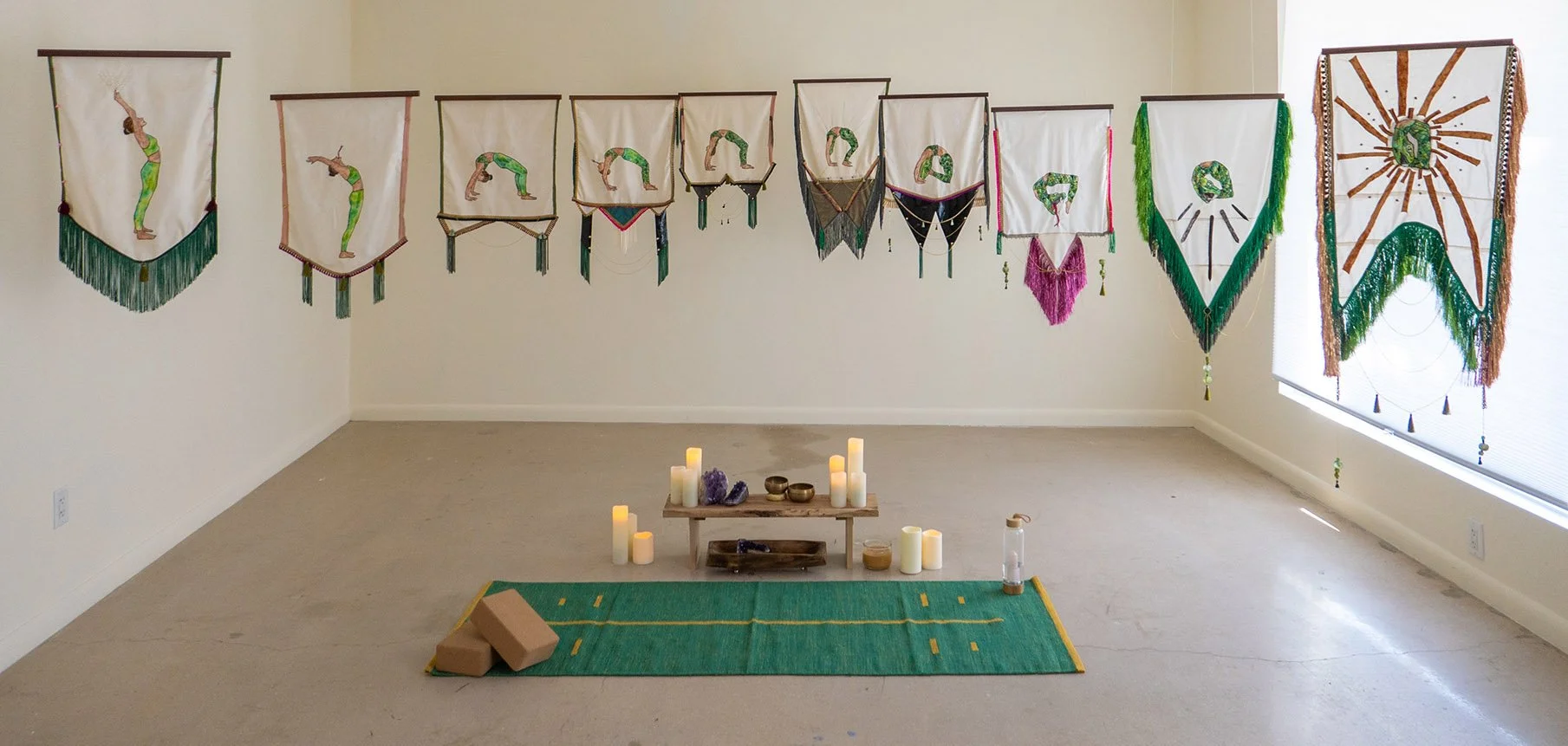Interview: Melanie Brewster
Melanie Elyse Brewster (b. Miami, Florida) is an artist, scholar, and practicing psychologist who lives and works in New York City. She previously earned her PhD from the University of Florida in 2011 and is a licensed psychologist and professor at Columbia University in the Department of Counseling and Clinical Psychology. Brewster has published over 70 peer-reviewed articles, book chapters, and a book, Atheists in America, on experiences of marginality and stress in the United States. Building her interdisciplinary focus, she earned her MFA from the School of Visual Arts (SVA) in 2024 and won the thesis award for her parafictional work on Wolfmotherhood.
Brewster’s art and scholarship focuses on stigma and queer futurities—informed by surreal, campy aesthetics that center craft, costume, and performance to destabilize identity. She uses fiber, collage, and assemblage to create works that address wild, mythological manifestations of gender and sexuality. Her research has been featured in media outlets such as CNN, NPR, Vice News, and the CBC, whilst her art has been exhibited nationally at universities and galleries such as The CAMP Gallery (Miami), The Invisible Dog Art Center (Brooklyn), and La Mama Galleria (NYC).
Read our interview with Melanie below!
Installation view of Yogini Ouroboros, 2023
PP: Walk us through a typical day in your studio or generally through your process to make new work.
MB: For as long as I can remember, ideas for various art projects enter my mind fully formed–often I am actually awoken by an idea around 5am and have to write it down in the notes app on my phone. That means I have the great fortune (or misfortune) of figuring out how to execute these harebrained, early morning ideas so that they match that perfect mental image. Generally, I don’t have one tidy process for time in the studio; as an interdisciplinary artist, the medium I use changes project by project and so much of my work is doing research and learning new skills. When I do get into the studio, I’m generally attached to a sewing machine and bopping around to Fever Ray, highly caffeinated.
Installation view of Hirsute Shrine, 2024
View of soft sculptures installed in the artist's studio
PP: What motivates you to make art?
MB: Art gives me another language to explore and express ideas that are important to me when I don’t want to fall into the trap of being precise, or “right” or accurate. I know that might sound weird, but art is a way of telling joyful lies and forcing the world to be what you’d like it to be, rather than what it is. If I wanted to be truthful all the time, I’d only stick to my day job as a psychology professor. Art is worldbuilding and creative embellishment–I’m pretty sure that only politicians and religious leaders get to fully lean into these tasks in the “real world.”
PP: Who is a current muse for your practice? Could be anyone fictional or real, dead or alive!
MB: My current muse is the mythological Roman wolfmother (aka, the lupa capitolina), credited with nursing the demigods Remus and Romulus. As a person who is childfree by choice, this myth has always been so baffling to me. I have always wondered: what if the she-wolf didn’t decide to feed the twin boys? Thus, the last 4+ years I have been working on rewriting this mythology to be an oddball parafictional tale of freedom from restrictive gender norms, lesbian separatism, and community building. That was the basis of my thesis project and a whole mess of hybrid wolf-woman soft sculptures.
Studio view, August 2024
PP: What would a dream project look like for you as an artist?
MB: A big thread in my work is the tension between belief and nonbelief, which results in a number of projects that have faux spirituality elements and fake religious practices. I have been wanting to work with dancers and choreographers to make a sequence of ritualized movements to unlock a new level of “wellness.” My hope is that this project would accompany my Yogini Ouroboros sequence, where a woman turns into a snake from doing too much yoga and begins to eat her own tail.
PP: What is your process like for critiquing your own work?
MB: When I was younger I would hate everything I made for 90% of the creation process and then abort the project before finishing. Thankfully I’ve learned that (no matter what the medium) every project has an “ugly phase” and you just have to push through that until you come out the other side. If I’m still dissatisfied with the outcome, I’ll put it aside for a few days and take some photos of it–anything to get into a different mindset while viewing.
To learn more about Melanie’s work, see her Instagram and Website




